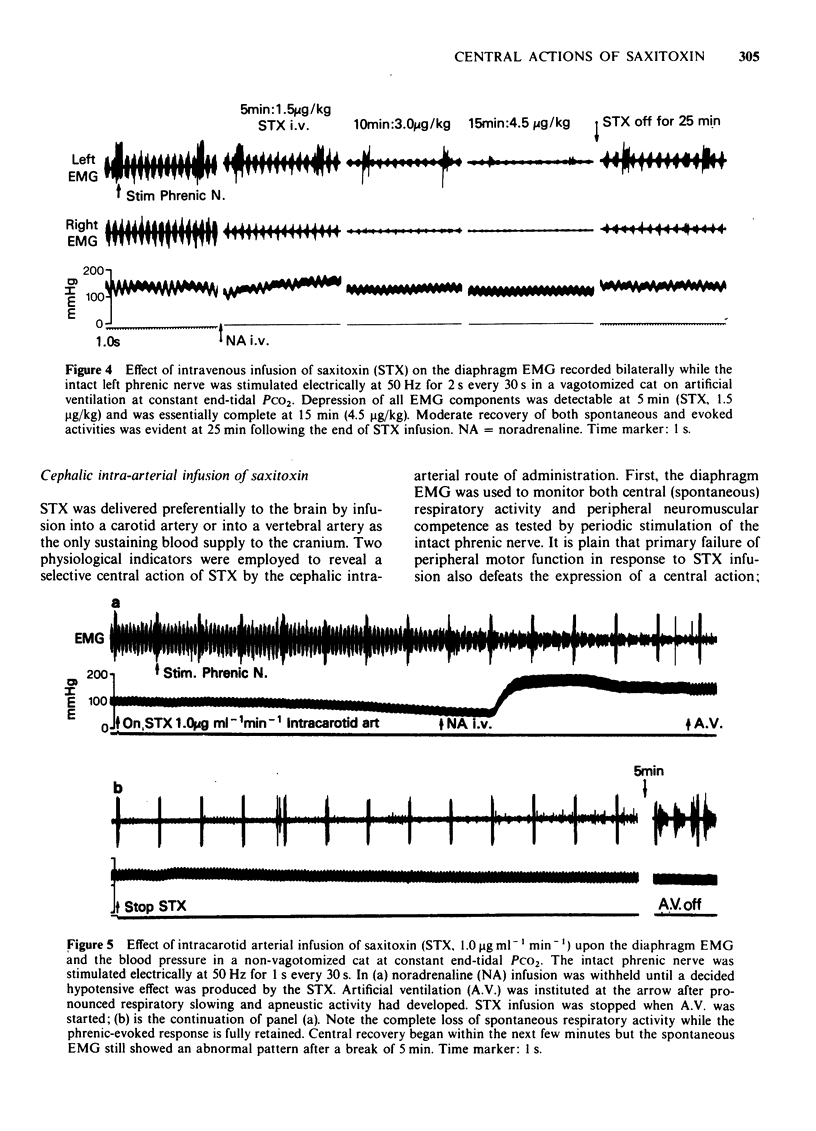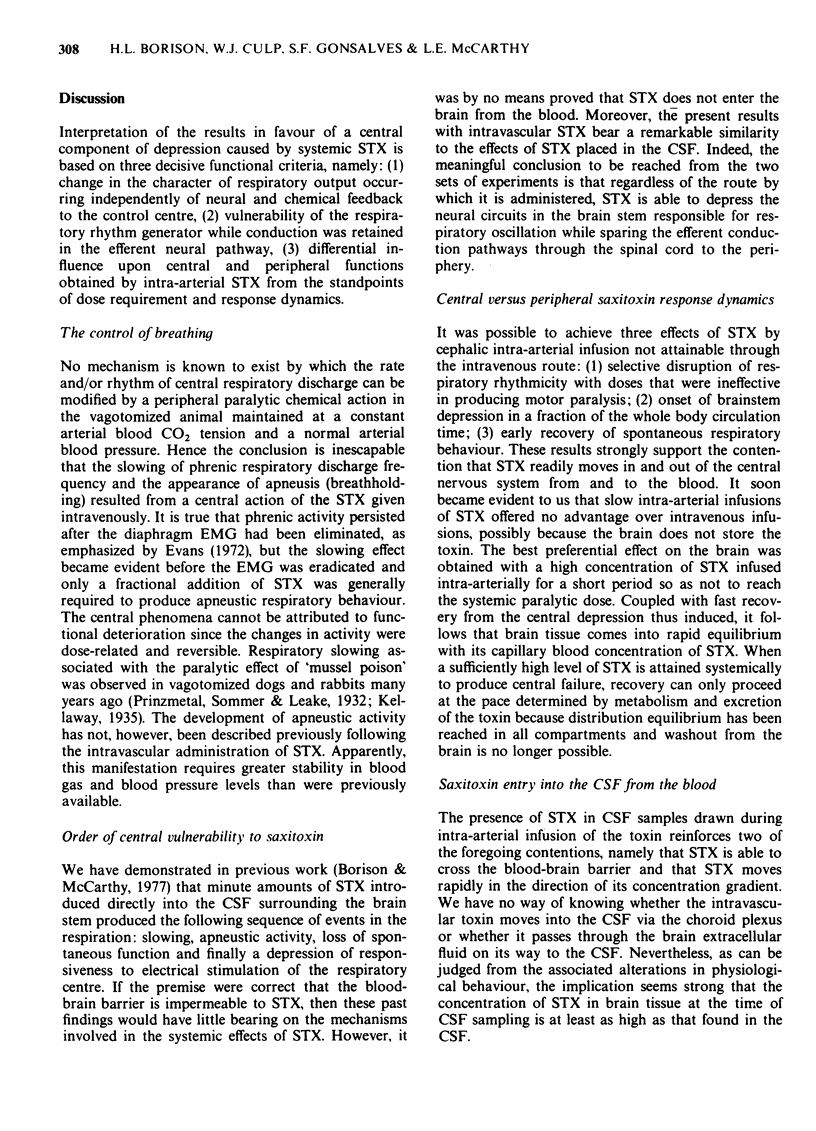Abstract
1 In cats anaesthetized with pentobarbitone and vagotomized, observations were made on the phrenic nerve action potential and the diaphragm electromyogram (EMG) at constant end-tidal Pco2. Arterial blood pressure was stabilized by intravenous infusions of noradrenaline.
2 Intravenous administration of saxitoxin (STX) initially abolished respiratory activity in the EMG and caused a slowing of oscillation in the central phrenic neurogram. Additional STX produced apneustic phrenic discharges followed by a progressive loss of nerve action potentials.
3 The inspiratory centre in the medulla oblongata was stimulated electrically to evoke a sustained phrenic nerve discharge. STX, given intravenously, resulted in the elimination of spontaneous nerve activity without interfering with the evoked response.
4 The cephalic intravascular infusion of STX into a carotid or vertebral artery depressed spontaneous respiratory activity while sparing EMG activity evoked by electrical stimulation of the intact phrenic nerve.
5 Spontaneous respiratory discharge in the phrenic nerve was eliminated by smaller doses of STX administered intra-arterially than were required intravenously. In addition, onset of and recovery from neural silence occurred faster following intra-arterial injection of STX.
6 Depressant effects on arterial blood pressure coincided with those on respiration when STX was given intra-arterially.
7 An electrophysiological assay on frog sartorius muscle was used to measure STX in the cerebrospinal fluid. Levels of STX detected were proportional to amounts of the toxin infused intra-arterially.
8 It is concluded that STX exchanges rapidly between blood and brain to bring about central depression and this adds to its peripheral paralytic actions.
Full text
PDF








Selected References
These references are in PubMed. This may not be the complete list of references from this article.
- Borison H. L., McCarthy L. E. Respiratory and circulatory effects of saxitoxin in the cerebrospinal fluid. Br J Pharmacol. 1977 Dec;61(4):679–689. doi: 10.1111/j.1476-5381.1977.tb07561.x. [DOI] [PMC free article] [PubMed] [Google Scholar]
- Evans M. H. Tetrodotoxin, saxitoxin, and related substances: their applications in neurobiology. Int Rev Neurobiol. 1972;15:83–166. doi: 10.1016/s0074-7742(08)60329-3. [DOI] [PubMed] [Google Scholar]
- Jaimovich E., Venosa R. A., Shrager P., Horowicz P. Density and distribution of tetrodotoxin receptors in normal and detubulated frog sartorius muscle. J Gen Physiol. 1976 Apr;67(4):399–416. doi: 10.1085/jgp.67.4.399. [DOI] [PMC free article] [PubMed] [Google Scholar]
- Kao C. Y. Tetrodotoxin, saxitoxin and their significance in the study of excitation phenomena. Pharmacol Rev. 1966 Jun;18(2):997–1049. [PubMed] [Google Scholar]
- MURTHA E. F. Pharmacological study of poisons from shellfish and puffer fish. Ann N Y Acad Sci. 1960 Nov 17;90:820–836. doi: 10.1111/j.1749-6632.1960.tb26425.x. [DOI] [PubMed] [Google Scholar]


